In this delightful recipe tutorial, we’re diving into the world of homemade tahini, the rich and velvety Middle Eastern sesame paste that elevates dishes to a whole new level! Join us on this culinary journey as we unravel the secrets behind creating the most luscious and authentic tahini right in your own kitchen.
Origin and history
Tahini has a rich history that dates back thousands of years. The exact origin of tahini is difficult to pinpoint as it has been a part of various cuisines for thousands of years. However, it is believed to have originated in the Middle East, particularly in ancient Mesopotamia and Egypt. Sesame seeds, the main ingredient of tahini, were cultivated in these regions and used extensively in their cuisine.
Historical records show that sesame seeds were a popular food source for ancient civilizations. The Assyrians, Babylonians, and Egyptians valued sesame seeds for their oil, which they used in cooking and for medicinal purposes. The Egyptians even used sesame oil as a base for perfumes and ointments.
Tahini is the Arabic name for ground sesame seeds. References to tahini can be found as far back as the 13th century where there is a reference to it as a sesame paste. It is found in Israeli, Middle Eastern, African, Chinese, Japanese, Iranian, Turkish and Korean cuisines. Tahini was used as a source of oil at one point. It began to appear in the United States in the 1940’s in health food stores.
Tahini, the product of toasted ground sesame seeds came from Persia where it was called “ardeh.” From there it moved to Israel. For centuries only the aristocracy and wealthy could obtain the ingredients to make tahini.
Tahini became a staple ingredient in Middle Eastern and Mediterranean cuisines, finding its way into dishes such as hummus, falafel, baba ganoush, and various dressings and sauces. Over time, tahini spread to other parts of the world, becoming a beloved and versatile ingredient in many global recipes.
Tips and notes
To achieve a successful homemade tahini, here are some helpful tips and notes:
- Start with fresh and good-quality sesame seeds for the best flavor and texture in your tahini. Taste the seeds first, it should taste fresh and not rancid.
- Tahini is usually made from hulled sesame seeds. The hulled seeds have a lighter color (white). The unhulled seeds are much darker and still have their hull or outer shell intact. But you can make tahini from unhulled and sprouted sesame seeds. Usually, tahini made from unhulled sesame seeds tends to taste more bitter and doesn’t get quite as smooth as when it is made from hulled sesame seeds.
- In our recipe, we’ve lightly toasted sesame seeds in a sauté pan on the stovetop since it only takes a few minutes. If you toast them in the oven be careful not to burn them. Over-roasted sesame seeds give a bitter taste. Over roasted meaning, seeds get darker in color, and oil starts to come out from the seeds. So lightly roast them and stop as soon as it starts changing color. A slight color change is fine.
- To achieve a smooth and creamy consistency, it’s essential to add a neutral oil to the ground sesame seeds. Use oils like mild olive oil, vegetable oil, or grapeseed oil. The oil helps emulsify the tahini and prevents it from becoming too thick.
- A high-power blender or food processor is required to make smooth tahini paste. Be sure to scrape down the sides and bottom of the blender often so that all the seeds are incorporated into the sauce.
- The amount of oil you add will determine the thickness of your tahini. For thinner tahini, add more oil, and for a thicker consistency, add less oil. Adjust the oil quantity according to your preference.
- Tahini is naturally nutty and rich, but you can customize the flavor by adding a pinch of salt or a touch of sweeteners like honey or maple syrup. Taste and adjust the seasoning according to your liking. In our recipe, we choose to keep the recipe as authentic as possible.
- Store the homemade tahini in an airtight container in the refrigerator. It will keep well for a few weeks. Over time, tahini can naturally separate, so give it a stir before using.
- While traditional tahini is made with sesame seeds and oil, you can get creative and add extra flavors like lemon juice, garlic, cumin, or even herbs to create unique variations of tahini to use in different recipes.
Remember, making tahini at home allows you to control the ingredients and flavors to suit your taste preferences. Have fun experimenting and enjoy the delicious and versatile homemade tahini in various dishes!
Serving
Middle Eastern restaurants use tahini by itself as a sauce or mix it with other ingredients to make other sauces and dishes. Often it is garnished with garlic and lemon juice. Hummus, a popular sauce, is made with tahini but it’s an incredibly versatile ingredient that can be used in all sorts of sweet and savory recipes such as dips and spreads ( like Baba Ghanoush, …), sauces (like Tahini sauce, …), salads dressing, baking (brownies, cookies, cakes, …), marinades (for meat, tofu, or vegetables), desserts (ice cream, fudge, or energy balls), Middle Eastern dishes (falafel, shawarma, …)…
Variants
- Nutella (Chocolate Hazelnut Spread);
- Peanut butter;
- Almonds butter;
- Cashew butter;
- Turkish Tahin Pekmez;
- Tahini Halva;
- …
Tahini: Homemade Sesame Seed Paste
Ingredients
- 250 g sesame seeds
- 3 tbs vegetable oil
Instructions
- In a dry skillet over medium heat, toast the sesame seeds for 3-4 minutes, stirring constantly, until they turn golden brown and become fragrant. Be careful not to let them burn.
- Transfer the sesame seeds to a high-speed blender or food processor.
- Start blending the seeds on low speed, gradually increasing to high. Scrape down the sides of the container as needed, for about 4-6 minutes.
- Once the seeds begin to break down and form a coarse paste, add the neutral oil to the mixture.
- Continue blending until the tahini reaches your desired consistency for about 4-5 minutes.
- If it's too thick, add another tablespoon of oil and blend again.
- Transfer the homemade tahini to an airtight container and store it in the refrigerator for up to weeks.
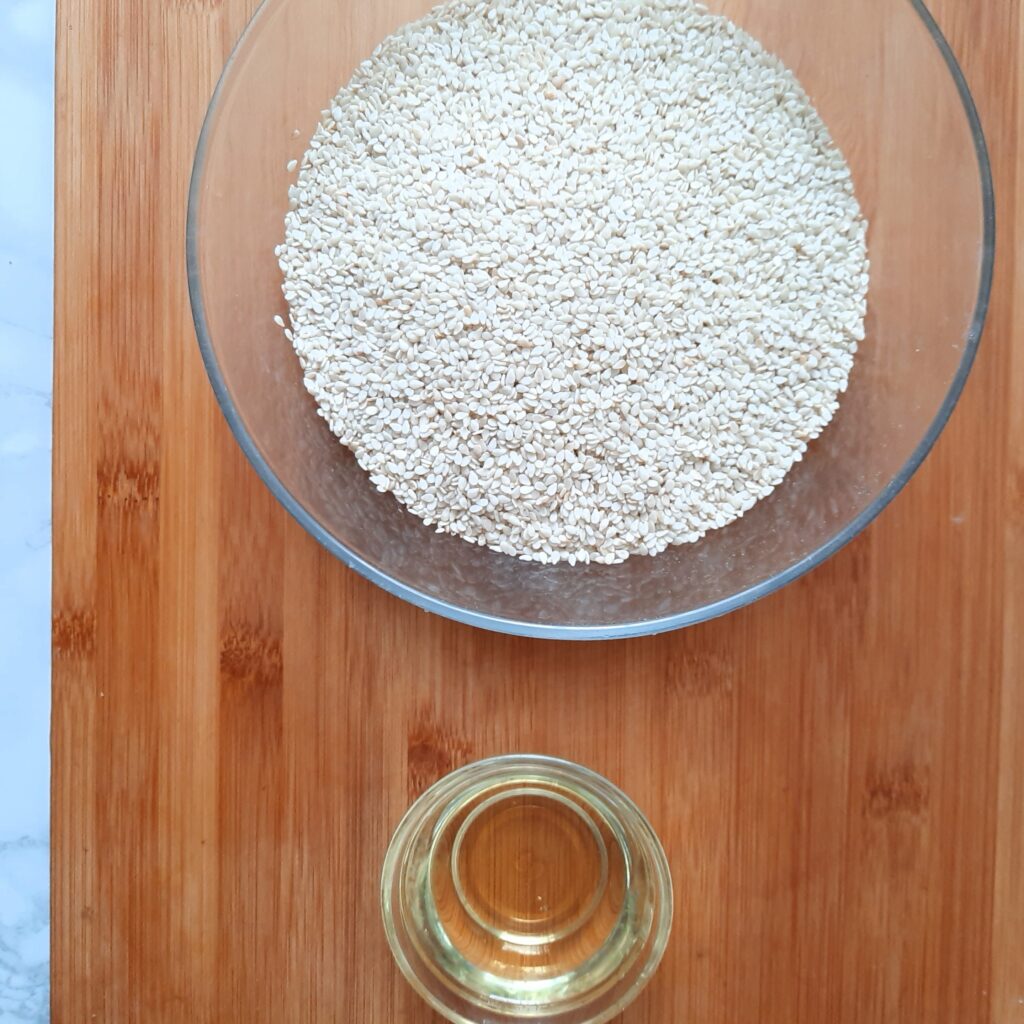
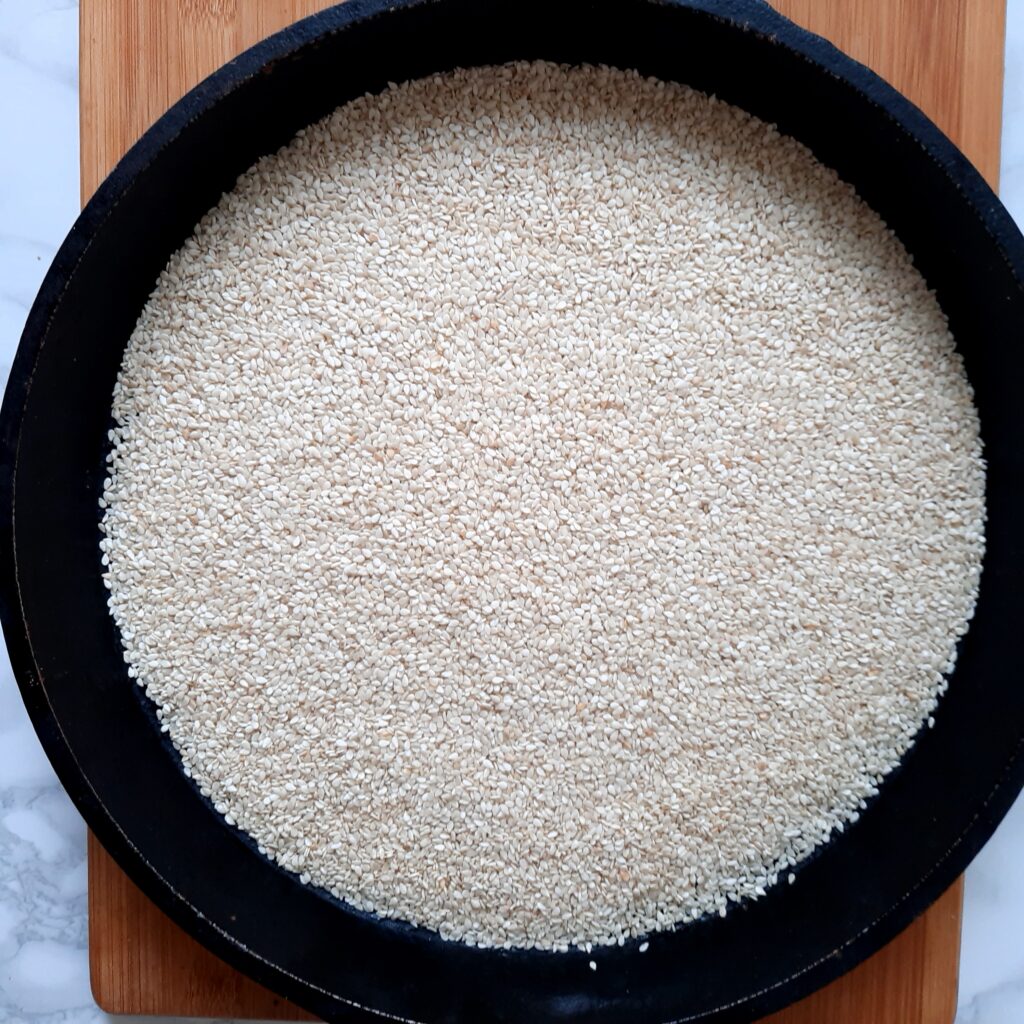
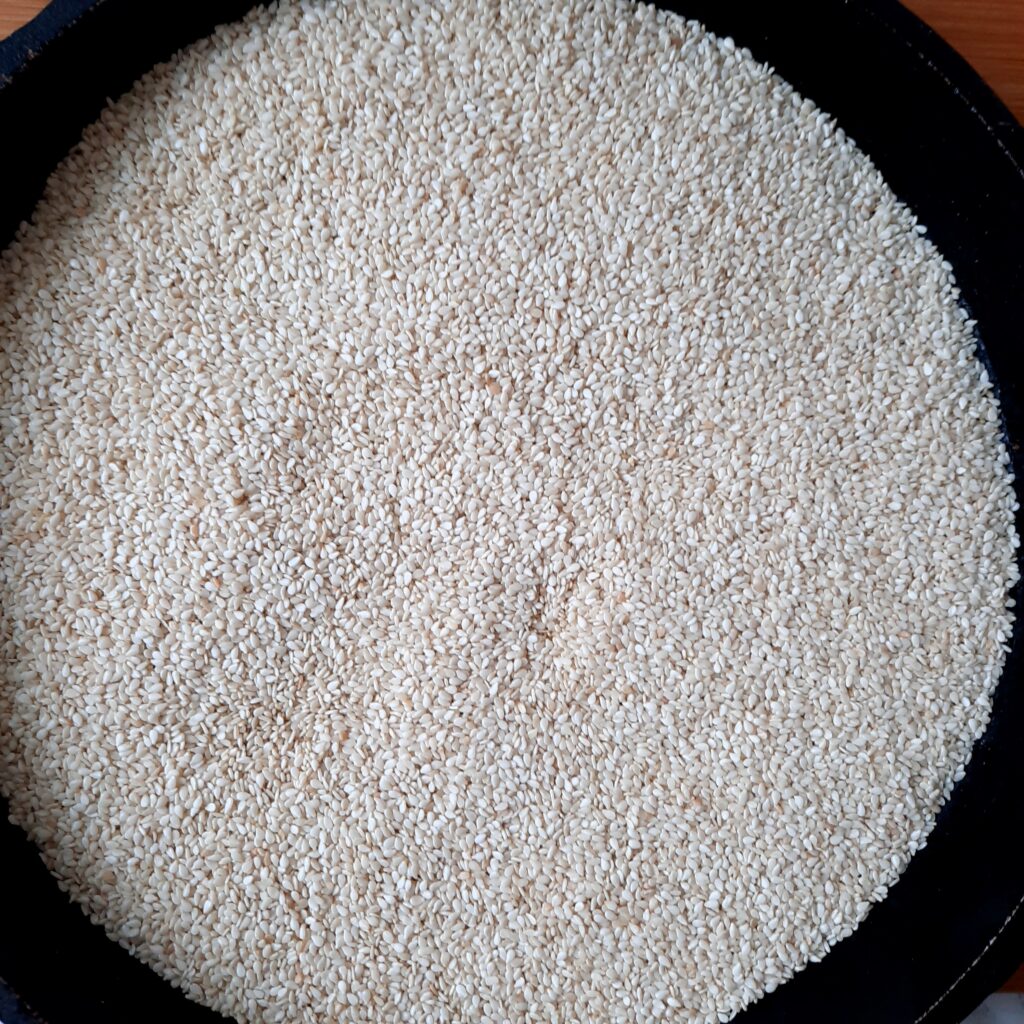
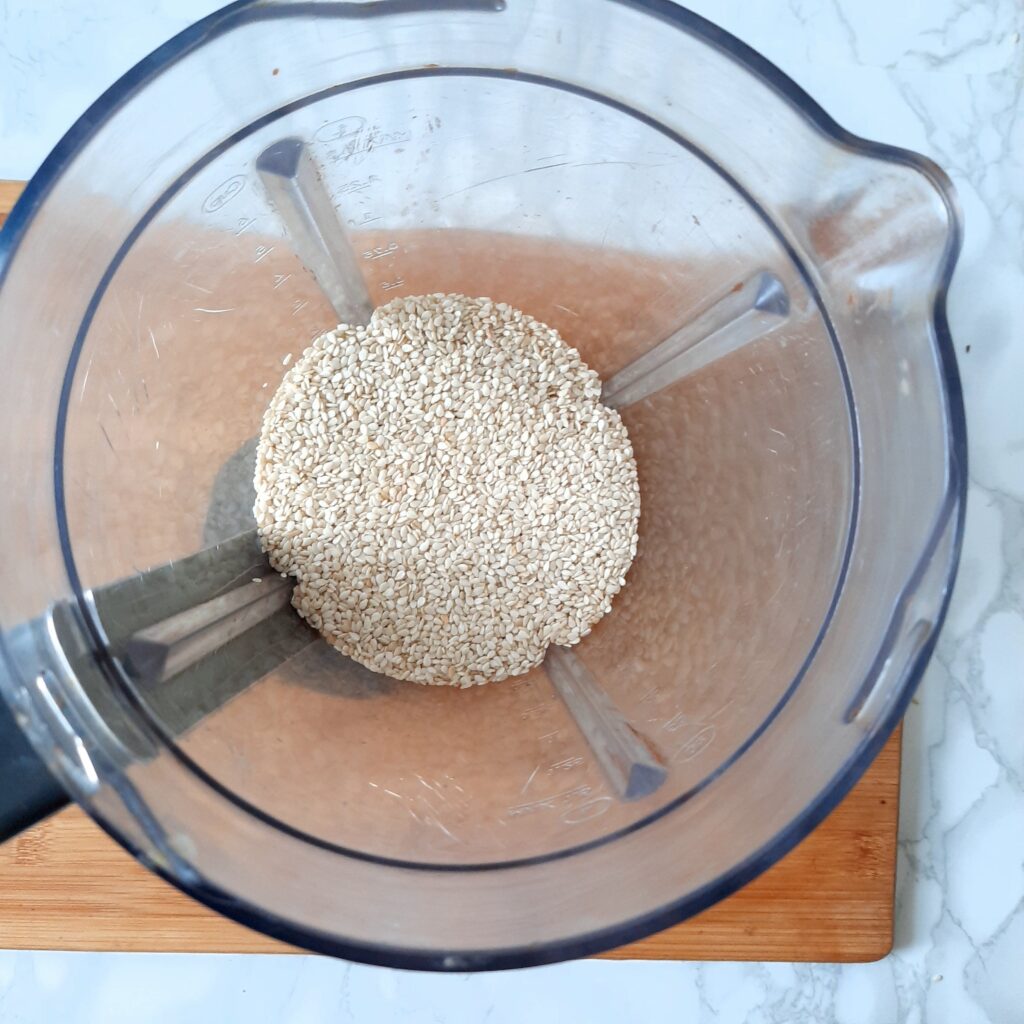
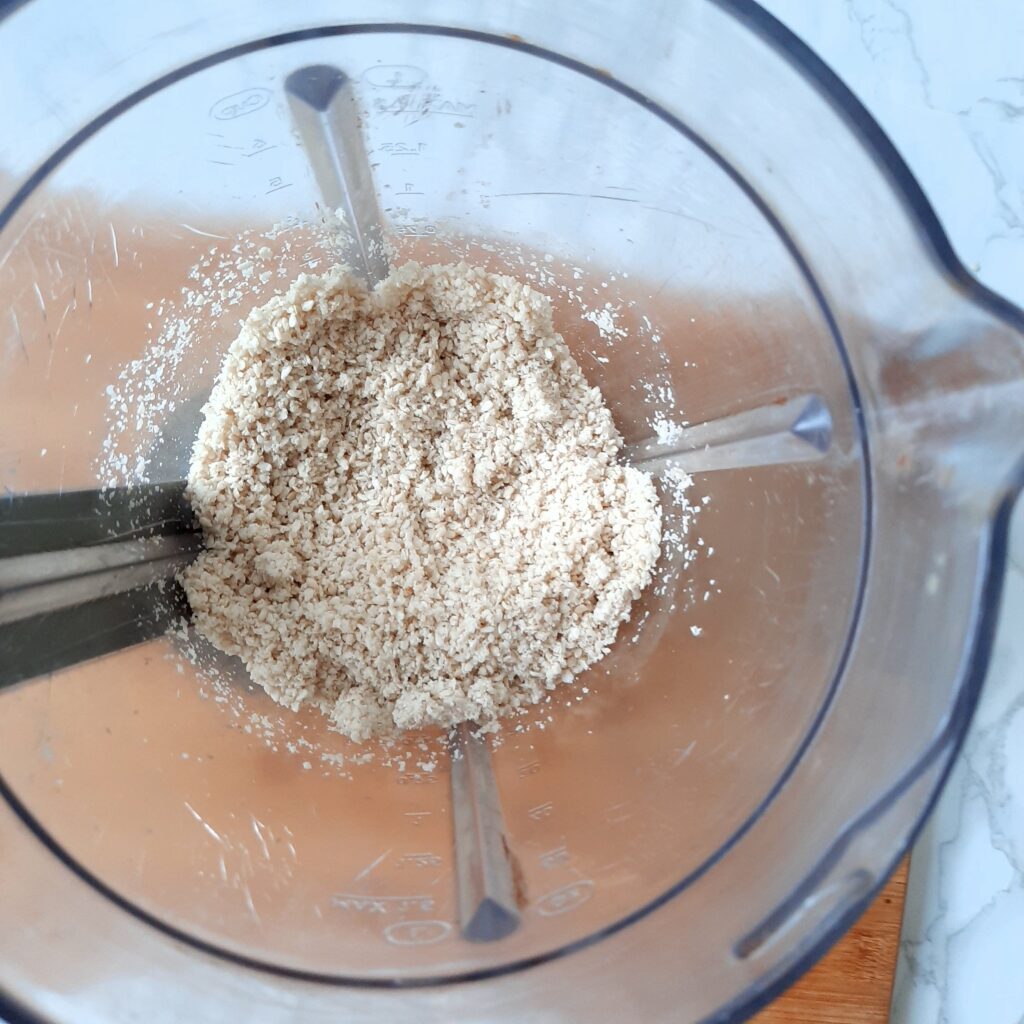
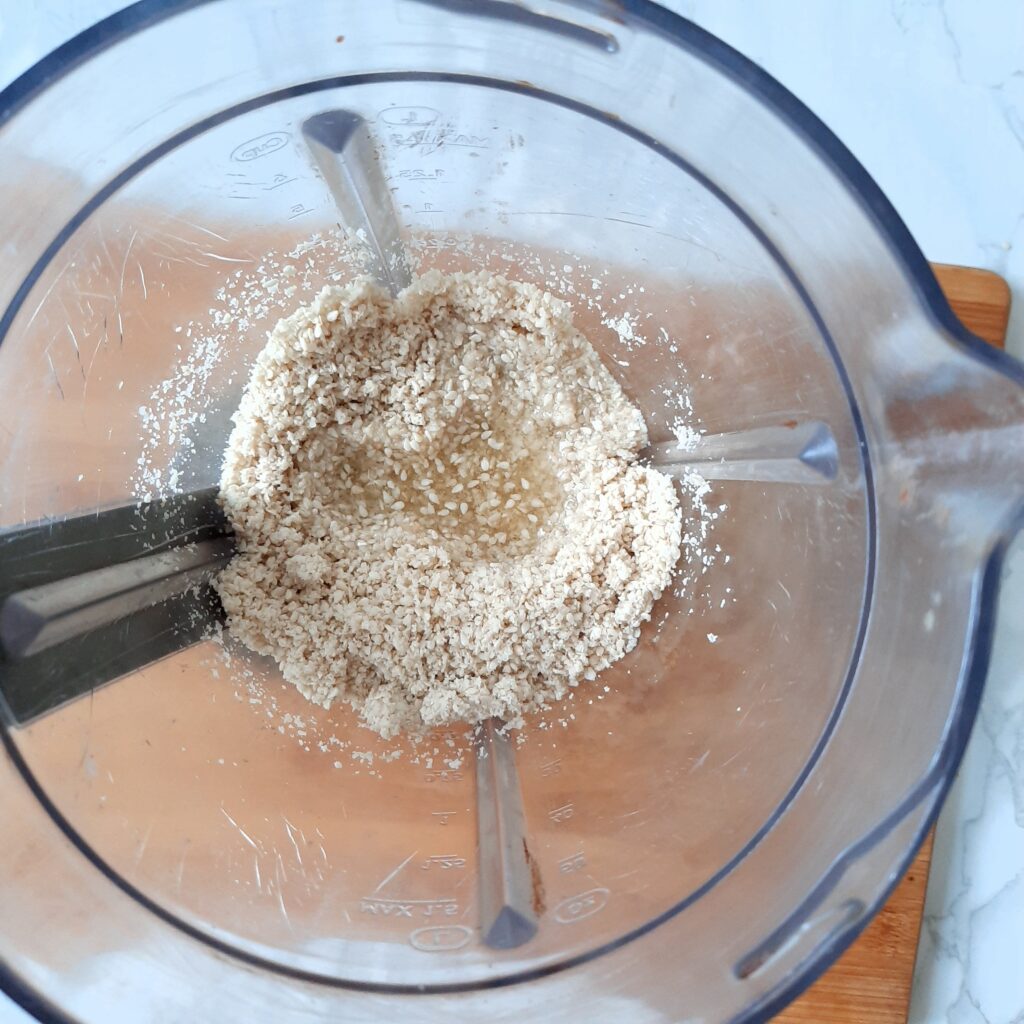

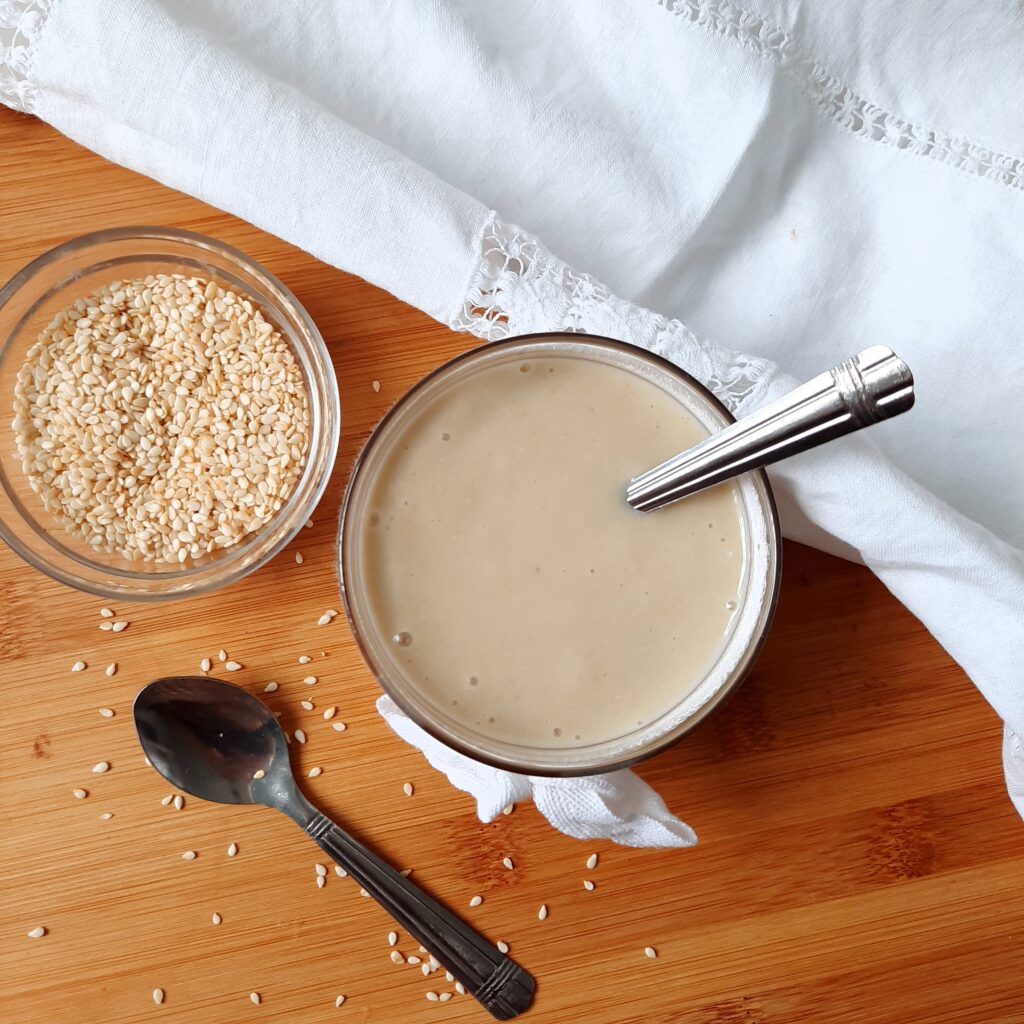

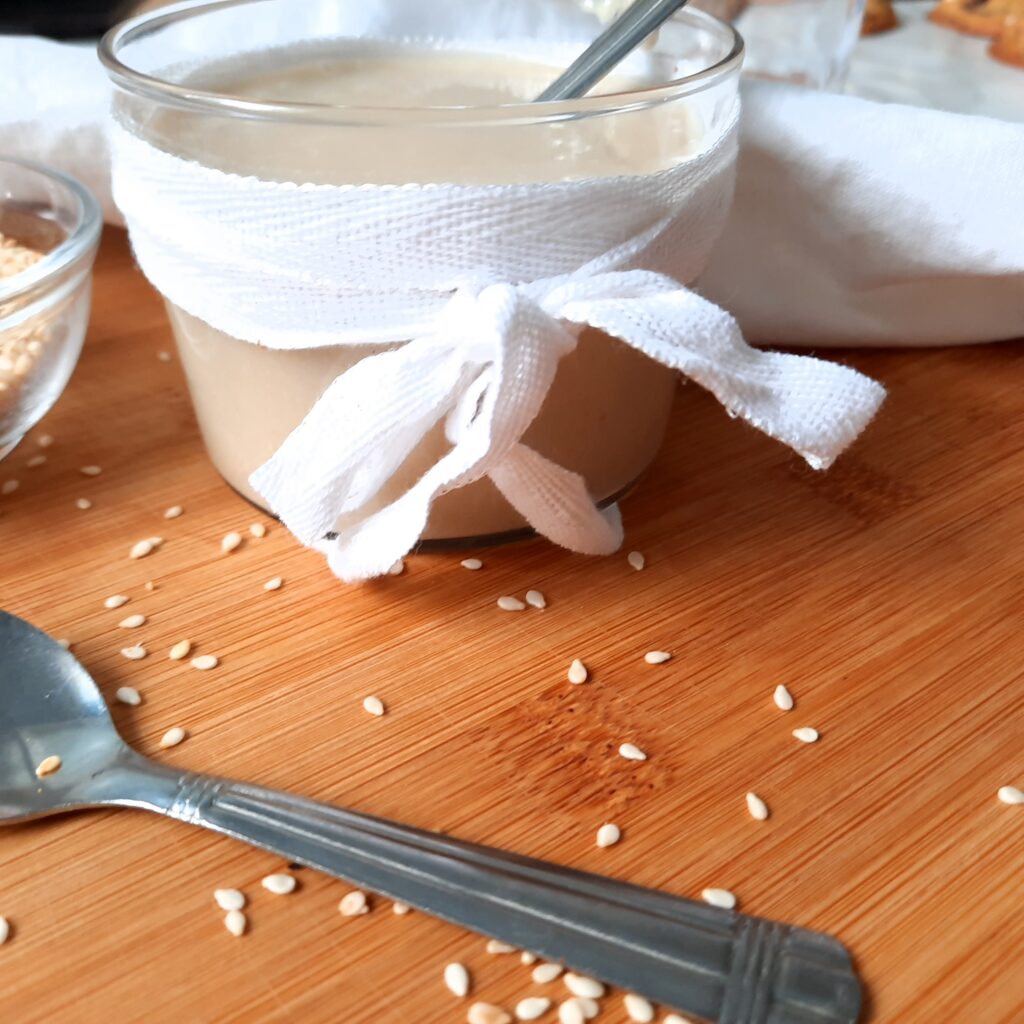
Sources : 1. https://www.bodrumnyc.com/blog/all-about-tahini-the-sesame-paste




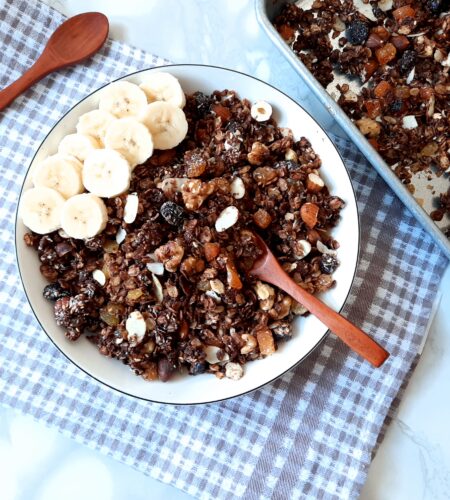

[…] Tahini; […]